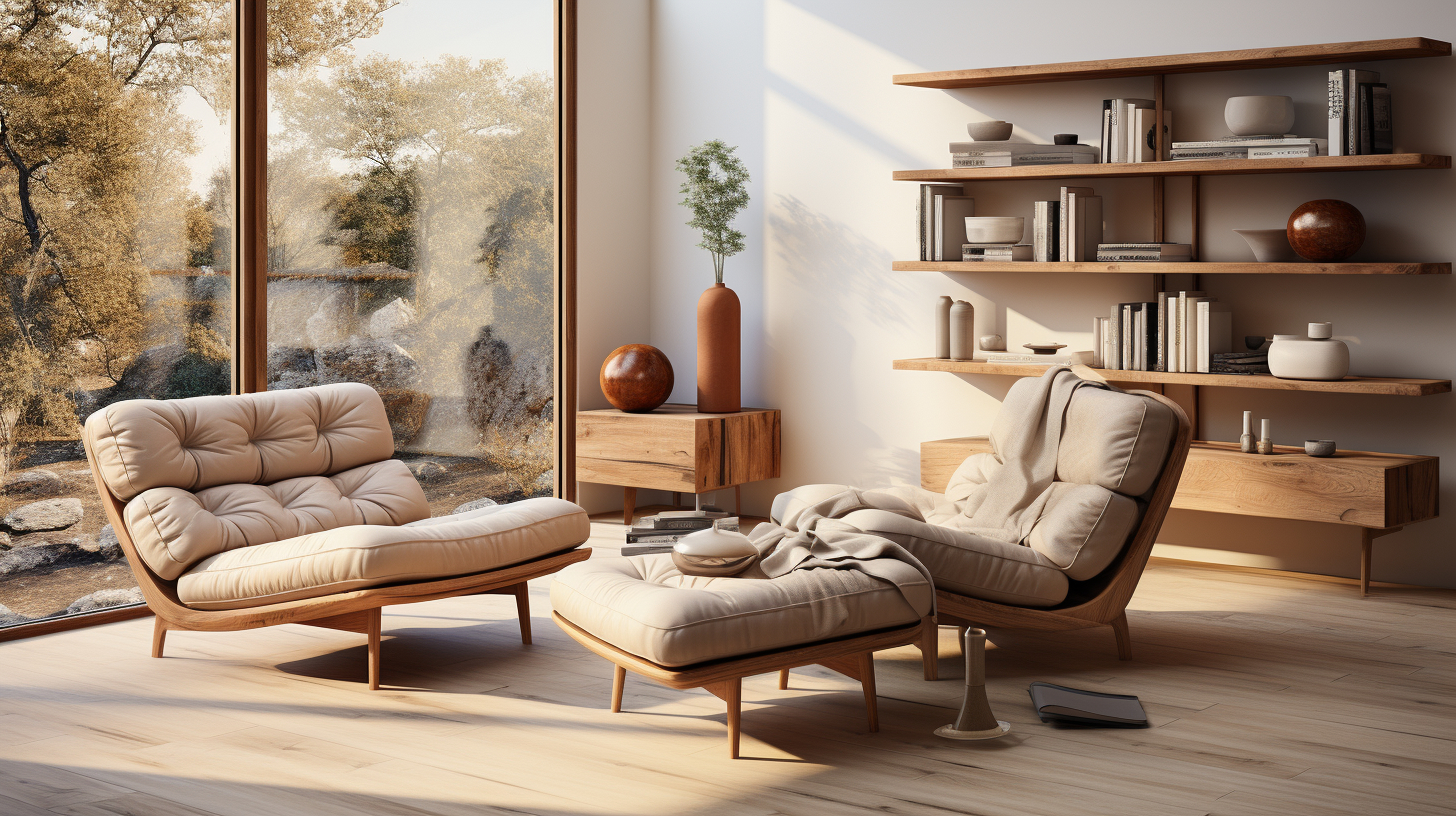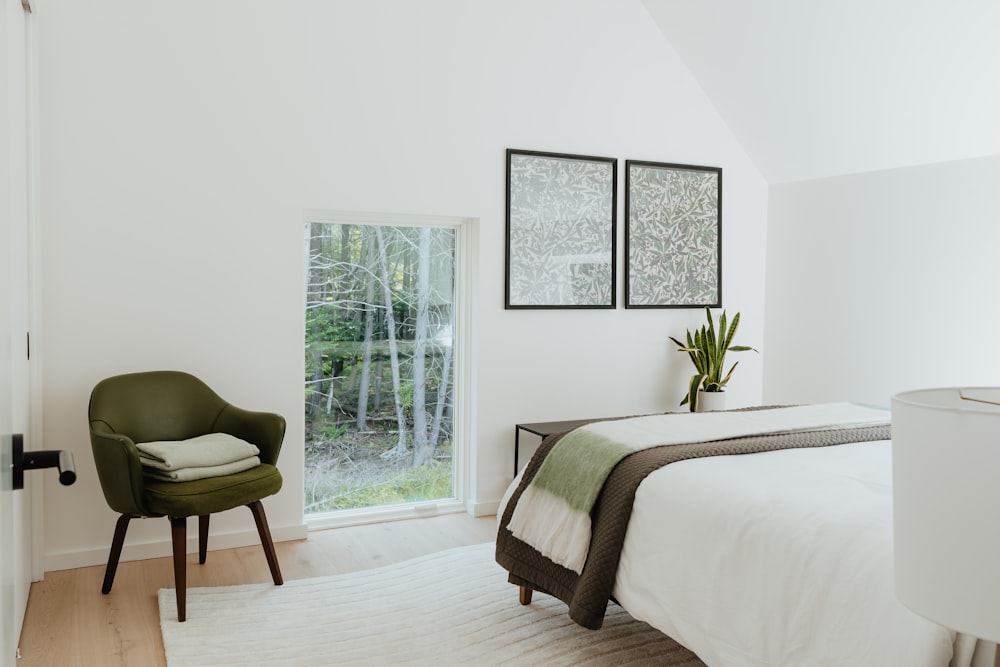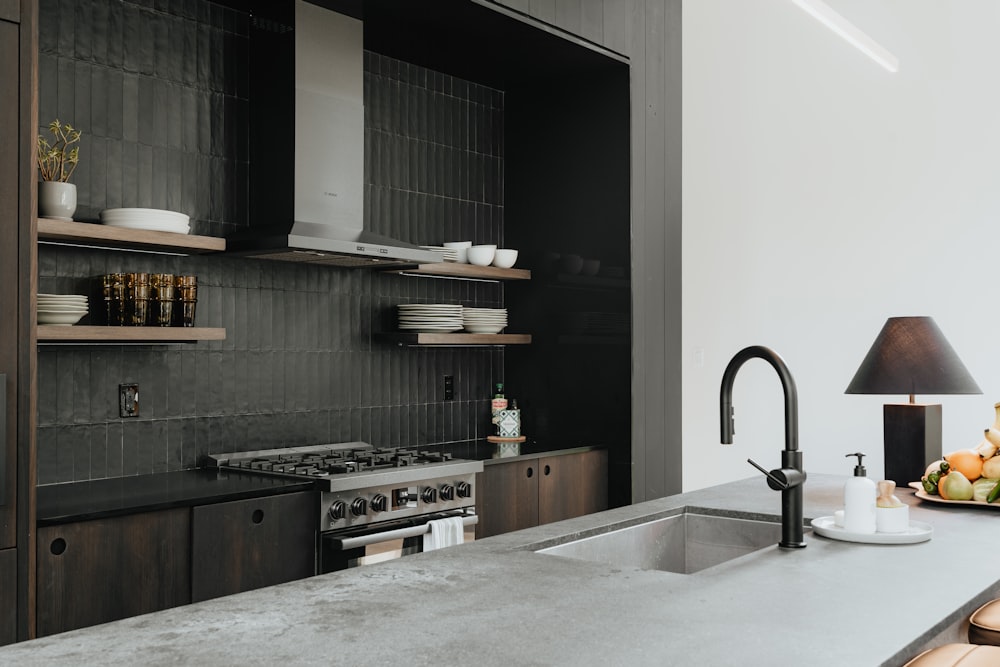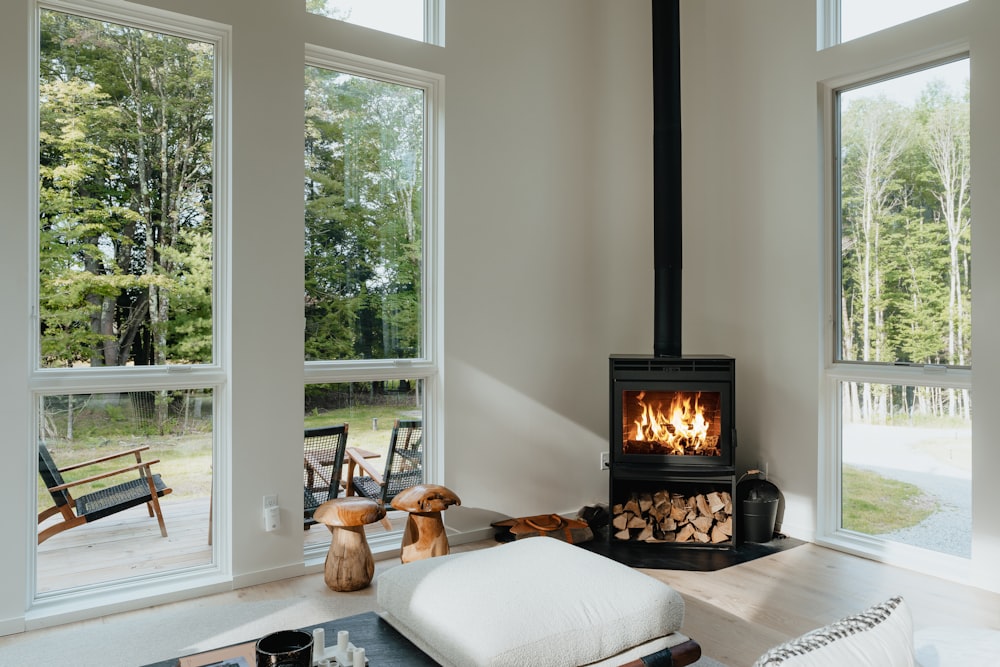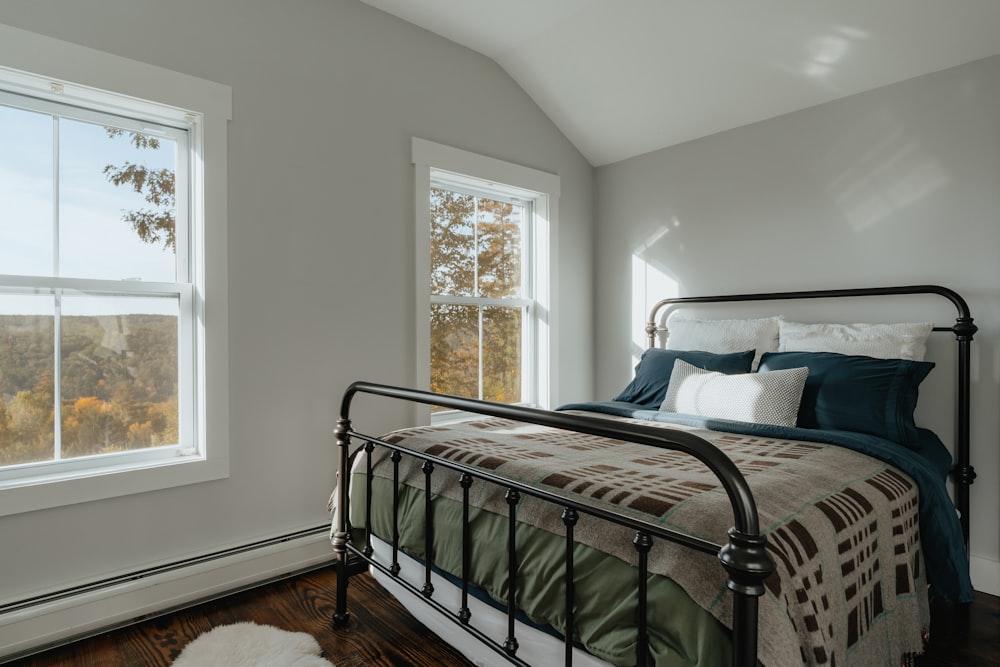Welcome to an exploration of the fascinating world of minimalist design and sustainability in 2024. In today’s society, consumerism has become an unquestioned norm, leading to significant environmental and social impacts. However, a shift towards sustainable design offers a glimmer of hope in tackling these challenges.
Minimalist Design and Sustainability in 2024
In this article, we will delve into the problem of consumerism in modern society, specifically addressing overconsumption issues and the impacts on industries. We will then examine the environmental consequences of consumerism and discuss the shift towards sustainable design, with a particular focus on the role of the pandemic in driving change. Additionally, we will explore the principles of sustainable design and provide examples of sustainable building design, along with the materials used in the process. Lastly, we will discuss the holistic approach of sustainable design and conclude with some thoughts on the importance of embracing a sustainable mindset.
So, let’s dive in and explore how minimalism and sustainability can reshape our consumerist culture and pave the way for a more sustainable future!
Problem of Consumerism in Modern Society
Overconsumption Issues
Consumerism is deeply ingrained in modern society, shaping our behaviors, values, and priorities. The relentless pursuit of material possessions and the need for constant economic growth have led to a plethora of issues that are detrimental to both individuals and the environment. Let’s explore some of the key problems associated with consumerism:
- Resource Depletion: The overconsumption of goods and services is putting a strain on our planet’s finite resources. From deforestation for timber to excessive water usage in manufacturing, we are depleting natural resources at an unsustainable rate.
- Waste Generation: Consumerism has given rise to a throwaway culture, where products are frequently discarded instead of being repaired or reused. This results in massive amounts of waste ending up in landfills, contributing to pollution and environmental degradation.
- Climate Change: Consumerism is closely linked to a high carbon footprint. The production, transportation, and disposal of goods contribute to greenhouse gas emissions, exacerbating the climate crisis.
Impacts on Industries
Consumerism not only affects the environment but also has significant impacts on various industries:
- Retail Industry: The thriving consumer culture has led to a constant demand for new products, prompting retailers to produce and sell more. This has created a hyper-competitive market where businesses are constantly pressured to churn out trendy items at low prices. The fast fashion industry, for example, is notorious for its unsustainable practices, including the use of cheap labor and environmentally harmful production processes.
- Technology Industry: The rapid advancement of technology has fueled consumerism further. Constant upgrades and new releases tempt consumers to keep buying the latest gadgets, leading to a surge in electronic waste. The improper disposal of electronic devices, containing hazardous materials, poses a threat to both human health and the environment.
It is essential to recognize the issues posed by consumerism and work towards finding sustainable solutions. By rethinking our consumption patterns, we can reduce our impact on the planet and create a more equitable and balanced society.
Environmental Impact of Consumerism
Consumerism, the relentless pursuit of acquiring and consuming goods and services, not only affects our personal finances and well-being but also has a significant impact on the environment. As we continue to indulge in excessive consumption, it is crucial to understand the environmental consequences of our actions and explore the need for a shift towards sustainable design.
Overconsumption Issues
- Consumerism leads to excessive production, which in turn leads to the depletion of natural resources. The continuous demand for goods requires the extraction of raw materials, often causing deforestation, habitat destruction, and the disruption of ecosystems.
- The production and transportation of goods contribute to greenhouse gas emissions, air pollution, and water pollution. Manufacturing processes emit harmful pollutants, and the transportation of goods generates carbon dioxide emissions, exacerbating climate change.
- The excessive waste resulting from consumerism poses a significant challenge. Landfills overflow with discarded products, packaging, and single-use items, further polluting the environment and putting a strain on waste management systems.
- Consumerism perpetuates a throw-away culture, encouraging the consumption of disposable and short-lived products. As a result, the lifespan of goods decreases, leading to more frequent replacement cycles and increased waste generation.
Impacts on Industries
Consumerism has far-reaching effects on various industries and sectors. Some of the notable impacts are:
- Retail Industry: With the rise of fast fashion and disposable goods, the retail industry experiences increased demand and pressure to produce at a faster pace. This demand not only depletes resources but also creates significant waste and pollution in the process.
- Technology Industry: The rapid advancement of technology and the constant release of new gadgets contribute to electronic waste. Electronic devices contain hazardous materials that can contaminate the environment if not properly disposed of or recycled.
“Consumerism has driven environmental degradation and waste production to alarming levels. It is vital for us to recognize the impact of our consumption choices to work towards more sustainable alternatives.” – Sustainability Reports
The negative environmental impacts of consumerism cannot be ignored. It is essential to acknowledge the need for change and take steps towards sustainable design to mitigate these effects.
Continue reading the following sections to learn about the shift towards sustainable design and its principles, examples of sustainable building design, and the materials used in sustainable design.
Shift Towards Sustainable Design
As society becomes more conscious of the impact of consumerism on the environment, there has been a noticeable shift towards sustainable design. This shift can be attributed to various factors, including the role of the pandemic and the recognition of the need to reduce negative environmental impacts.
The Role of the Pandemic
The ongoing COVID-19 pandemic has brought about an increased awareness about environmental impacts and a greater willingness to take personal actions to mitigate them. With large-scale lockdowns and restrictions, people have had the opportunity to reflect on their consumption habits and reconsider their priorities. This has led to a growing demand for sustainable products and a greater emphasis on the concept of “less is more.”
Reduction in Negative Environmental Impacts
One of the primary aims of sustainable design is to reduce the negative environmental impacts associated with traditional consumerism. By adopting sustainable design principles, individuals and industries can minimize waste, reduce energy consumption, and limit their carbon footprint. This not only benefits the planet but also creates healthier and more efficient living and working spaces.
To understand the principles of sustainable design, let’s take a closer look at how it optimizes site potential, conserves resources, improves energy usage, and maximizes building efficiency.
Principles of Sustainable Design
Sustainable design is an approach to designing buildings and spaces that prioritize minimizing negative environmental impacts while enhancing the well-being of people and the planet. In order to achieve this, sustainable design incorporates principles that focus on optimizing site potential, conserving resources, improving energy usage, and maximizing building efficiency. Let’s explore these principles in more detail:
1. Optimizing Site Potential
Sustainable design begins with understanding and utilizing the unique characteristics of a site. By analyzing factors such as solar orientation, wind patterns, and existing ecosystems, designers can make informed decisions that maximize the site’s potential for sustainability. This may include strategies such as orienting the building to maximize natural light and heat gain or incorporating green spaces that support biodiversity.
2. Resource Conservation
One of the key principles of sustainable design is the conservation of resources. This involves reducing the consumption of non-renewable resources and minimizing waste generation throughout the life cycle of a building. Some strategies for resource conservation include:
- Using recycled or salvaged materials in construction
- Incorporating efficient water management systems, such as rainwater harvesting or greywater recycling
- Implementing strategies for waste reduction, such as composting and recycling programs
- Designing spaces that promote energy efficiency and reduce the need for excessive heating, cooling, and lighting
3. Improved Energy Usage
Energy efficiency is a critical aspect of sustainable design. By reducing energy consumption, we can lower greenhouse gas emissions and decrease reliance on non-renewable energy sources. Some strategies for improving energy usage include:
- Designing buildings with efficient insulation to minimize heat loss or gain
- Incorporating renewable energy sources such as solar panels or wind turbines
- Utilizing natural ventilation and lighting techniques to reduce the need for artificial systems
- Employing energy-efficient appliances and lighting fixtures throughout the building
4. Building Efficiency Maximization
Maximizing the efficiency of a building means designing spaces that fulfill their intended purpose while minimizing waste or excess. This principle considers factors such as space layout, functionality, and flexibility. By optimizing the use of space, materials, and technology, we can create buildings that are efficient, adaptable, and sustainable.
Key Takeaways:
- Sustainable design focuses on optimizing site potential, conserving resources, improving energy usage, and maximizing building efficiency.
- Principles of sustainable design include: optimizing site potential, resource conservation, improved energy usage, and building efficiency maximization.
- Strategies for sustainable design include: using recycled materials, implementing efficient water management systems, utilizing renewable energy sources, employing natural ventilation and lighting techniques, and maximizing space efficiency.
By following these principles, designers can create buildings and spaces that not only minimize their negative impact on the environment but also enhance the well-being of the people who use them. The adoption of sustainable design practices is crucial in creating a more sustainable future for generations to come.
Also Read: Minimalist Design and Sustainability : Rethinking Consumerism in Home Decor in 2024
Examples of Sustainable Building Design
Sustainable building design is all about creating structures that are environmentally friendly and resource-efficient. It involves integrating sustainable practices and materials into the construction process to minimize the negative impact on the environment. Here are some examples of sustainable building design that showcase the innovative ways architects and designers can create eco-friendly structures:
1. Natural Lighting Incorporation
One of the key aspects of sustainable building design is maximizing the use of natural light. This not only helps reduce the energy consumption required for artificial lighting but also creates a more pleasant and healthy indoor environment. Architects achieve this by incorporating large windows, skylights, and light wells into the building’s design. This allows for ample daylight to penetrate the interior spaces, reducing the need for artificial lighting during the day.
2. Ventilation Techniques
Proper ventilation is crucial for maintaining good indoor air quality, which is essential for the health and well-being of occupants. Sustainable building design incorporates effective ventilation techniques to ensure adequate airflow and minimize the need for energy-intensive mechanical ventilation systems. This can be achieved through the strategic placement of windows and vents to facilitate natural airflow and the use of energy-efficient mechanical ventilation systems when necessary.
3. Efficient Space Utilization
Sustainable building design focuses on optimizing space utilization to minimize the building’s footprint and reduce resource consumption. Architects and designers employ innovative strategies such as open floor plans, flexible layouts, and multifunctional spaces to maximize the usability of each area. By making efficient use of available space, sustainable buildings can accommodate the needs of occupants while minimizing the use of materials and energy.
These examples illustrate how sustainable building design can be both aesthetically pleasing and environmentally responsible. By incorporating natural lighting, ventilation techniques, and efficient space utilization, architects can create structures that are not only visually appealing but also contribute to a healthier and more sustainable future.
Sustainable building design involves the use of innovative strategies to create environmentally friendly structures that minimize resource consumption and promote a healthier indoor environment. By incorporating natural lighting, ventilation techniques, and efficient space utilization, architects and designers can create buildings that are both visually appealing and eco-friendly.
Materials Used in Sustainable Design
Sustainable design is a concept that aims to minimize the negative environmental impact of buildings and promote the use of resources in a responsible way. One of the key aspects of sustainable design is the use of eco-friendly materials that have a lower environmental footprint compared to traditional construction materials. By incorporating sustainable materials into building design and construction, we can help reduce waste, conserve resources, and create healthier and more sustainable living spaces.
Here are some examples of materials commonly used in sustainable design:
- Recycled Materials: Using recycled materials is an effective way to reduce the demand for new resources and minimize waste. Recycled materials can include reclaimed wood, recycled metals, and even recycled glass. These materials are often just as sturdy and durable as their non-recycled counterparts, making them a great choice for sustainable design projects.
- Bamboo: Bamboo is a rapidly renewable resource that grows quickly and can be harvested without causing damage to the environment. It is a versatile material that can be used in a variety of applications, from flooring to furniture. Bamboo is known for its strength and durability, making it an excellent choice for sustainable design projects.
- Cork: Cork is a natural and sustainable material that is harvested from the bark of cork oak trees. The process of harvesting cork does not harm the trees, as only the bark is removed. Cork has excellent insulation properties and is often used as flooring or in wall coverings. It is also a highly renewable resource, as the trees can be harvested every 8-10 years.
- Hempcrete: Hempcrete is a bio-composite material made from the inner core of hemp plants mixed with lime binder. It is lightweight, durable, and has excellent insulation properties. Hempcrete is a carbon-negative material, meaning it absorbs more carbon dioxide from the atmosphere during its production than it emits. It is commonly used in sustainable building projects as an alternative to traditional concrete.
- Low VOC Paints: Volatile Organic Compounds (VOCs) are harmful chemicals that are released into the air through the use of certain paints. These chemicals can have adverse effects on indoor air quality and human health. In sustainable design, low VOC paints are used, which contain minimal amounts of these harmful compounds. They are better for both the environment and the occupants of the building.
- Recycled Plastic: Plastic waste is a significant environmental issue, and incorporating recycled plastic into sustainable design helps address this problem. Recycled plastics can be used in various building applications, such as insulation, roofing materials, and even structural components. This not only diverts plastic waste from landfills but also reduces the need for virgin plastic production.
By using these sustainable materials in building design, we can create structures that are not only aesthetically pleasing but also have a lower impact on the environment. Furthermore, sustainable materials often offer additional benefits such as better indoor air quality, improved energy efficiency, and reduced maintenance costs.
It’s important to note that the availability and suitability of these materials may vary depending on the geographical location and specific project requirements. Consulting with architects, designers, and construction professionals with expertise in sustainable design is essential to ensure the right materials are selected for each project.
Incorporating sustainable materials into building design is a crucial step towards creating a more sustainable future. By choosing materials that minimize harm to the environment, we can contribute to the conservation of resources and the creation of healthier living spaces for generations to come.
Holistic Approach of Sustainable Design
When it comes to sustainable design, taking a holistic approach is crucial. It goes beyond simply focusing on environmental considerations; it takes into account the well-being of both people and the planet. This comprehensive approach recognizes that everything is interconnected and that design decisions have far-reaching impacts. Here are some key aspects of the holistic approach to sustainable design:
Integration of Social, Economic, and Environmental Factors
Sustainable design looks at the bigger picture by considering the social, economic, and environmental implications of a design. It takes into consideration the needs and desires of the people who will be using the space, the economic feasibility of the design, and the environmental impact it will have. By balancing these three factors, sustainable design strives to create spaces that are beneficial for people, profitable for businesses, and kind to the environment.
Community Involvement and Collaboration
A holistic approach to sustainable design involves engaging with the community and collaborating with various stakeholders. By involving the community in the design process, designers can gain valuable insights and ensure that the design meets the specific needs of the people who will be using it. Collaboration with experts from different fields, such as architects, engineers, and environmental specialists, allows for a well-rounded and informed design that considers different perspectives.
Long-Term Thinking
Sustainable design takes a long-term view by considering the lifecycle of a design and its long-term impacts. It focuses on durability, adaptability, and flexibility to ensure that the design can withstand the test of time and changing needs. By considering the long-term implications, sustainable design minimizes waste and reduces the need for frequent renovations or replacements.
Regenerative Approach
A regenerative approach is an essential aspect of the holistic approach to sustainable design. Instead of aiming to just minimize harm, it seeks to create positive impacts. Regenerative design aims to restore and enhance ecosystems, improve the quality of life for people, and contribute to the overall well-being of the planet. By incorporating regenerative practices into the design process, sustainable design can actively contribute to the restoration and preservation of the environment.
Education and Awareness
A holistic approach to sustainable design also involves education and awareness. Designers have a responsibility to inform and educate clients, stakeholders, and the public about the importance of sustainable design and the benefits it brings. By raising awareness and promoting sustainable practices, designers can inspire others to adopt more sustainable lifestyles and choices.
By taking a holistic approach to sustainable design, we can create spaces that not only minimize harm to the environment but also enhance the well-being of people. It requires critical thinking, ethical awareness, and a cultural shift towards minimizing harm to the environment. Let’s embrace sustainable design as a way to create a better future for ourselves and the generations to come.
“Sustainable design should not just be an afterthought; it should be at the forefront of every design decision. By considering the social, economic, and environmental factors, we can create spaces that are truly sustainable and beneficial for all.”
Also Read: The Impact of Minimalism on Sustainability : Rethinking Consumerism in 2023
Concluding Thoughts
In conclusion, sustainable design offers a compelling solution to the problem of consumerism and its negative environmental impacts. By adopting a minimalist approach and focusing on reducing waste and maximizing resource efficiency, we can create a more sustainable and eco-friendly future. Here are a few key takeaways:
- Sustainable design requires critical thinking, ethical awareness, and a cultural shift towards minimizing harm to the environment.
- It involves optimizing site potential, conserving resources, improving energy usage, and maximizing building efficiency.
- Natural lighting, ventilation techniques, and efficient space utilization are some examples of sustainable building design.
- Sustainable design incorporates the use of non-toxic, sustainably produced, or recycled materials with lower environmental impacts.
- It takes a holistic approach, considering the well-being of people and the environment.
By embracing sustainable design principles, we can create living spaces that are not only aesthetically pleasing but also eco-friendly and socially responsible. Minimalist Home Guru understands the importance of sustainable living and provides guidance and resources on decluttering, selecting clean-lined furniture, and creating a calming and clutter-free living space. To discover more about minimalist home design and sustainable living, visit Minimalist Home Guru today!
Remember, small changes can make a big difference. Let’s rethink consumerism and embrace a more sustainable lifestyle for the benefit of ourselves and future generations. Together, we can make a positive impact on the world around us.
For more information and design ideas read Designing a Sustainable Home: Tips for Eco-Friendly Homeowners in 2023. Happy Designing!!
Frequently Asked Questions
- What is minimalist design and how does it relate to sustainability?Minimalist design is a design approach that focuses on simplicity, functionality, and eliminating unnecessary elements. It relates to sustainability by promoting the use of fewer resources, reducing waste, and encouraging conscious consumption.
- How can minimalist design contribute to reducing environmental impact?Minimalist design promotes the use of sustainable materials, energy-efficient products, and waste reduction. By eliminating unnecessary elements and focusing on essential functionality, it reduces the overall environmental footprint of products and encourages longer product lifespans.
- Can minimalist design still be visually appealing?Absolutely! Minimalist design is known for its clean and sleek aesthetic, which can be visually appealing to many. The focus on simplicity and elegance can create a sense of calmness and sophistication in the design.
- How can consumers embrace minimalist design in their lifestyle?Consumers can embrace minimalist design by decluttering and simplifying their living spaces, opting for sustainable and durable products, avoiding impulsive buying, and choosing quality over quantity. It’s about being intentional with purchases and appreciating the beauty of simplicity.
- Are there any challenges in adopting a minimalist lifestyle?While adopting a minimalist lifestyle has many benefits, challenges can include breaking consumerism habits, dealing with societal pressures to own more, and adjusting to a mindset that values experiences and relationships over material possessions. However, with time and conscious effort, these challenges can be overcome.

